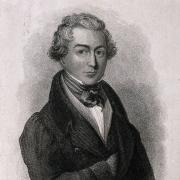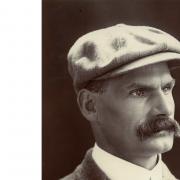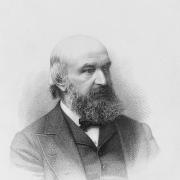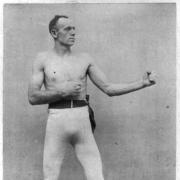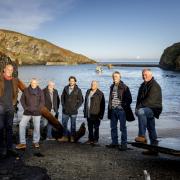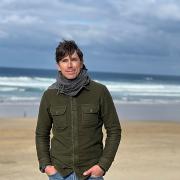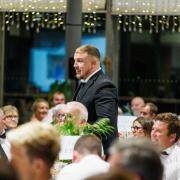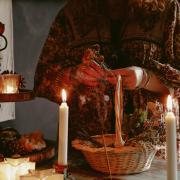Cornwall has an incredible habitat and attracts many wildlife, not least many species of birds in the winter

Winter is an ideal time for bird watching, and Cornwall is a great place to discover birds. Our coastline offers an enviable array of seabirds, while our dunes, estuaries, heath, moorland, farmland and woodland offer shelter to overwintering birds of all shapes and sizes.
Wonderful wetland

As the continent freezes over, large numbers of resident and migratory birds, from divers and grebes to ducks and geese, congregate around Cornwall’s estuaries, rivers and marshes. Many of the nature reserves across the region include wetland areas. Three expansive sites are jointly managed by Cornwall Wildlife Trust and Cornwall Bird Watching and Preservation Society.
Maer Lake Nature Reserve on the northern outskirts of Bude, known locally as The Pool, is internationally important. Rare visitors include Bewick's swans, whooper swans and long-tailed ducks, while winter regulars include the UK’s smallest duck, the teal. The male is easily recognised by its brick-red head with a large green patch extending back and down from each eye. Another dainty dabbling duck, the wigeon, can be seen at Maer Lake and in huge numbers on all of Cornwall’s estuaries.
Middle Amble Marsh is a new nature reserve adjoining the Walmsley Sanctuary near Wadebridge. With funding from its January 2015 Bird Appeal, Cornwall Wildlife Trust plans to create new open water habitat and importantly, public access here. Bird watching is valuable not only for leisure and education, but also to provide conservation organisations with crucial records of bird numbers. Data from the British Trust for Ornithology published last October shows that UK populations of wild birds are declining in all habitats. By monitoring birds, we can help experts make informed decisions about what action is needed to help them.
At Windmill Farm Nature Reserve on the Lizard, an ambitious project is underway to convert the 17th century windmill into a unique viewing platform which will be ideal for bird watching and recording, and will complement existing bird hides. Barn owls and kestrels are found at Windmill Farm, as well as overwintering wildfowl, so it is well worth a visit.

The coastal fringes
On the south coast at Looe, look out for impressive great northern divers and great crested grebes, as well as occasional heavily built, soft-feathered eider ducks. Oystercatchers, sometimes called sea-pies because of their black and white plumage, can be found in flocks on the shore at low tide. Over on Looe Island Nature Reserve (which you can visit from Easter to September), shags and cormorants line up on the rocks.
On rocky north coast shores, look for turnstones running around amongst the pebbles and also on harbour walls in towns and villages.
Some of Cornwall’s grassy clifftops are being managed specifically for Cornwall’s charismatic choughs, which are now breeding successfully in Penwith. Cornwall Wildlife Trust is part of a grazing programme at Penhale Dunes, near Perranporth, which is encouraging the return of choughs to clifftop grassland further up the north coast. The Trust’s 2015 Bird Appeal will raise funds to help this continue.

Heaths, farms and woodlands
Heaths and moorland may seem bleak in winter, but they are ideal locations for viewing birds of prey. The merlin and hen harrier have been sighted at one of Cornwall Wildlife Trust’s newest acquisitions, Bartinney Nature Reserve in West Penwith. Short-eared owls are known to hunt over the neighbouring Caer Brân Nature Reserve.
Farmland birds have been hit particularly badly by changes in agriculture. However, at Churchtown Farm Community Nature Reserve, Saltash, huge mixed flocks of farmland birds such as finches, linnets, skylarks, bramblings and reed buntings can still be seen during the winter months, thanks to deliberate cultivation of the land with a traditional rotation of arable crops and fallow land by Cornwall Wildlife Trust.
In woodlands, all you have to do is stand quietly, and bird calls will direct you to avian silhouettes among the bare branches above you. Raucous grating sounds draw your eye to the exotically colourful jay, loud flapping reveals wood pigeons taking flight, while high-pitched twittering amongst tall evergreens could betray tiny goldcrests. A rustle amongst dead leaves gives away a blackbird or thrush on the ground looking for food. Tiny wrens bob about in the undergrowth, and flocks of pink-breasted chaffinches or acrobatic long-tailed tits flit from tree to tree. Shrubs and trees still holding their berries along woodland edges and hedges attract winter visitors such as redwings and fieldfares, or perhaps even a waxwing.

Woods to visit include Cabilla and Redrice Woods Nature Reserve in the Glyn Valley, and in the west, Tehidy Woods at Camborne, Devichoys Wood Nature Reserve near Falmouth and Kennall Vale Nature Reserve at Ponsanooth, where dippers dive at the bottom of a steep valley. Woodlands in the sheltered Tamar Valley are best for finding nuthatches and treecreepers, as they search for insects on tree trunks. Woodland birds from robins and tits to woodpeckers make good use of our gardens too, so please give them a warm welcome by providing shelter, seeds, berries, clean water and clean, well-stocked feeders. Bird seed company Vine House Farm give Cornwall Wildlife Trust a 4.5% donation on all sales made in Cornwall, amounting to at least £3,500 annually, so their website is well worth a visit: www.vinehousefarm.co.uk.
At Maer Lake and Windmill Farm Nature Reserves, Cornwall Wildlife Trust, in partnership with CBWPS, plans to clear vegetation from open water areas for wildfowl and wetland birds, using specialist machinery. At Windmill Farm Nature Reserve, creation of a unique wildlife watching tower includes building a spiral staircase, viewing platform and new roof.

At Churchtown Farm Community Nature Reserve, Saltash, Cornwall Wildlife Trust hopes to continue cultivating fields of seeding arable crops to support our declining farmland birds.
On Looe Island Nature Reserve, monitoring of great black-backed gulls, cormorants, shags, fulmars and oystercatchers by volunteers requires a resident Warden.
At Penhale Dunes near Perranporth, Cornwall Wildlife Trust is maintaining a herd of grazing cattle to help choughs return to the area.
At Cabilla & Redrice Woods near Bodmin, nestboxes are studied by staff and volunteers, and need ongoing replacement if monitoring is to continue.

All of these schemes to help birds are dependent upon voluntary contributions, which is why Cornwall Wildlife Trust has launched a January Bird Appeal to raise £19,330 for the specific projects listed above. For more information, see www.cornwallwildlifetrust.org.uk/appeal or telephone (01872) 273939





